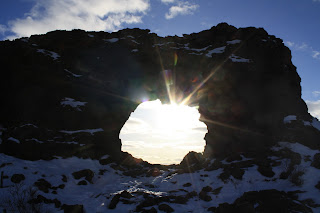Their claim to fame: their tenacious spirit and exemplary organisational skills. When the Machalilla region was designated a national reserve in 1979, all the inhabitants were ordered to leave and find homes elsewhere. The people of Agua Blanca fought for their right to maintain their land and way of life, but things were not looking good until a very fortunate discovery was made: the community rests on land completely crawling in the archaeological remains of the Manteñas, the ancestors of Agua Blanca´s modern inhabitants. With the help of Colin McEwan, a Scottish archaeologist currently curator of the Latin American Department of the British Museum, the community created their own museum using the artefacts found on their land, then trained their own guides and opened to the public as a community tourism project. The guides lead tours through the museum, explaining the significance of the artefacts found on their own land by their own people, then take visitors through the dry forest for a spot of bird watching, and finish up with a swim in the sulfur lagoon and a mud bath.
"Community tourism" is a bit of a buzzword in Ecuador at the moment. Over the past few years it has thrust itself full-force into carving a place for itself on the global playing field, and has seen tourism as the means to do this. As a result, every university has a thriving tourism course, and guides, operators, and tours have popped up like worms after a spring deluge (my similes are off, I know, but it's late). For small indigenous groups looking to keep their way of life and still earn an income, community tourism has been the answer: inviting tourists in to experience first-hand how they live. In Nizag, the last community I worked in, this endeavor was only beginning; the group involved in community tourism is excited and asiduous, but they´re still just feeling their way along. In Agua Blanca, however, the project has been developing for the past 30 years, and they are a fine example to other communities hoping to do the same. That they started out on the right path is evident: the community is clean and rubbish-free, the type of tourism they offer is non-invasive and celebrates their history, and financially it completely works. Over 75% of the income of the community comes from the tourism, directly through the tours and also from artesania sales. Unlike the people from many other groups I spoke with in Ecuador, who inevitably had a sister, brother, child, or parent working abroad to send money home because there isn´t enough work here, only one person had left Agua Blanca to work in the US, and that was because he had married one of the archeologists who had come to study the ruins.
Life in Agua Blanca is tranquil. The guide-work is split between 26 men who work in three groups on a monthly rotating basis, so that each guide gets a chance to work equally throughout the month. This serves to spread the wealth tourism brings to the community (to make the profits go further, as a rule only one guide is allowed per nuclear family) and allows the guides to tend to their crops/animals/other work during the rest of the month. After a few shy days of sitting on the front porch of the museum in relative silence, the first group of guides warmed to us and pretty soon the other two volunteers and I were referred to as "Mi reina" any time we were addressed. When tourists would arrive to the museum in cars or the little motorcycle taxis that fill the streets of nearby Puerto Viejo, the guides would take turns leading them through the artefacts of the museum, stop by their own little Ripley´s Believe It or Not of poisonous snakes, two-headed chickens, and massive millipedes, and then carry on to the archaeological site and sulfur pool. Our job was to follow the tour and learn the schpeal, then give a tour to any tourists who spoke English but not Spanish. Unfortunately I was only utilised twice for this purpose, but nevertheless I too have been an official guide in an Ecuadorian National Park. Shiny sticker, please.
 |
| All quiet on the Agua Blanca front. |
 |
| Oooh, whales... |
 |
| Oooh, boobies... |
 |
| Oooh, frigates... |
 |
| False advertising - everything was not in fact a dollar. |
My time has come to say goodbye to Ecuador and head on to more Peruvian pastures. I´ve spent a little over 2 months here; I´ve worked with a shaman in the jungle, lived in an indigenous community in the Andes, played archeological guide on the coast, jumped off bridges, swum with sharks, and eaten more rice and street food than I care to think about. Ecuador is a fascinating country; its small size makes it a traveller´s dream - the nightmarish long bus journeys of other South American countries are non-existant here, and you can travel from Orient to Andes to coast in a few hours. Its investment in development in recent times has it entering the global community with a leap, but it remains to be seen how strategic their efforts have been. Putting all their development eggs in the volatile and unsustainable tourism basket without investing in other necessary professional fields is courting future difficulty, both for the economy and for the overall wellbeing of the country. But it remains to be seen if more strategic development is to come. For the sake of a beautiful land and rich, diverse culture, I hope so.
Next, offwards and downwards to Peru, land of all things Peruvian.
More photos of adventures on the Ecuadorian coast can be found here.

























